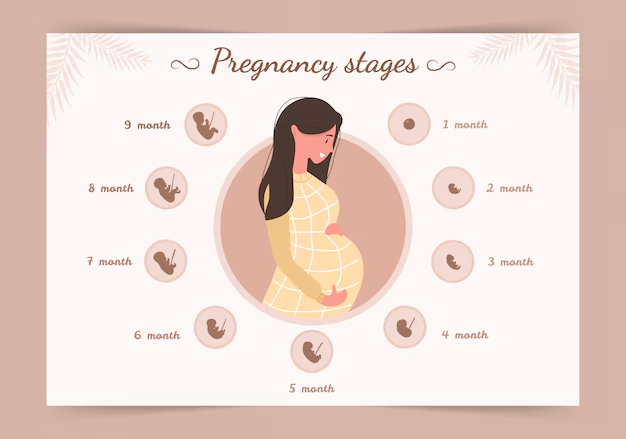Baby development at 36 weeks

Baby development at 36 weeks
Pregnancy symptoms during week 36
Cramping
Mild cramping throughout pregnancy is normal and usually harmless. Cramping can be caused by issues like bloating, constipation, and round ligament pain. At this point in pregnancy, you may have cramping from Braxton Hicks, or false labor contractions, as well.
Cramping can also be an early sign of labor. Call your provider if:
- You feel contractions accompanied by lower back pain.
- You feel more than six contractions an hour (even if they don't hurt).
- The contractions are coming at regular intervals.
- You also have vaginal discharge or bleeding.
- You have any other signs of premature labor.
Headaches
Pregnancy can increase the frequency of your headaches or migraines. (Though not always: In one study, about two-thirds of women who were prone to them noticed that their migraines actually improved when they were pregnant.)
Hormonal changes, dehydration, and sleep problems are just a few common causes of pregnancy headaches. Taking good care of yourself can sometimes help you avoid headaches – eating and drinking enough, getting rest, exercising – but not always. If you're having trouble, talk to your healthcare provider about taking acetaminophen (Tylenol) for headache relief.
Sometimes a headache at this point in pregnancy can be a sign of preeclampsia or another serious condition. Call your provider if you have a severe headache, a headache for the first time, a sudden explosive headache, or a headache with other symptoms like fever, a stiff neck, or vision problems.
Vaginal discharge
Your vaginal discharge may start looking different as labor approaches, so it's worth keeping an eye on. A thick glob of discharge could be your mucus plug dislodging, which is a sign of early labor. The mucus could be clear, pinkish, brownish, or tinged with a bit of blood. If you lose your mucus plug, you may also see darker, bloody discharge called "bloody show." Stay alert for other early signs of labor, and call your provider if you have any worrisome symptoms.
You'll also want to call your provider if your water breaks. Wondering how you can tell leaking amniotic fluid from vaginal discharge? Amniotic fluid is usually clear or slightly yellowish, watery, and odorless or slightly sweet-smelling. If your water breaks, amniotic fluid may come out as a leak or trickle or in a big, dramatic gush. Either way, it will continue to leak continuously.
Dizziness
Dizziness during pregnancy is common due to cardiovascular changes. Your heart rate goes up, your heart pumps more blood per minute, and the amount of blood in your body increases by 30 to 50 percent. Plus, your growing uterus is putting pressure on your veins and slowing circulation to the lower half of your body.
Your cardiovascular and nervous systems can usually adjust to these changes and maintain enough blood flow to your brain. But sometimes they don't adapt quickly enough, which can leave you feeling lightheaded or dizzy, or even make you faint.
To prevent dizziness and avoid fainting or falling, don't stand up too fast or lie flat on your back. Eat and drink regularly, avoid overheating, and exercise safely.
If you have persistent lightheadedness, frequent bouts of dizziness, or any other concerns, tell your doctor or midwife.
Pelvic pain
Pelvic pain is often a sharp pain deep in your hips or groin, though it can also feel like soreness, stinging, or burning. About one in four expecting moms experience pelvic pain, and it often begins in the third trimester and can linger until months after you give birth. Pregnancy hormones that loosen your ligaments are a major cause – these relaxed ligaments can stretch too far and allow bones to shift and put pressure on nearby muscles. Weight gain and a changing center of gravity also contribute to pelvic pain.
You have a number of options if you're hurting. Pregnancy bands and belts can help stabilize your pelvis, and physical therapy, acupuncture, and Tylenol can reduce pain.
Your baby drops
If your baby drops down into your pelvis, you may feel additional pressure in your lower abdomen, which may make walking increasingly uncomfortable. If your baby is very low, you may feel lots of vaginal pressure and discomfort as well. Some women say it feels as though they're carrying a bowling ball between their legs.
As your baby's head gets lower in your pelvis, you may also occasionally feel a sharp pain or jolt in your pelvis or vagina. This is known as lightning crotch, and it happens when your baby's head puts pressure on your cervix and the nerves around the lower part of your uterus.
On the plus side, you may have an easier time breathing if your baby drops. Because your baby puts less upward pressure on your diaphragm, your shortness of breath might improve. And it may be easier to eat a regular-sized meal, since your stomach won't be as squeezed.
Pregnancy checklist at 36 weeks
Pack your hospital bag
Key things to pack in your hospital bag include your insurance card, toiletries, comfy clothing, a going-home outfit for your baby, a phone charger, and snacks for after labor. Your partner may also want to pack their own bag with clothes, toiletries, and their favorite snacks.
Some things you don't want to pack are jewelry, lots of cash, and other valuables. You won't need diapers, lots of baby clothes, or bottles and nipples (the hospital will provide all these things). This will also help keep your bag light for the trip home.
Know what to do when labor starts
Be sure to review the signs of labor with your doctor or midwife. If they haven't yet, your provider should give you clear guidelines about when to call and when to head to the hospital or birth center.
Your instructions will depend on your individual situation – such as whether you have a high-risk pregnancy or other complications, whether this is your first baby, whether you're planning a cesarean delivery, and how far you live from the hospital or birth center.
Make food for after your baby's born
If you cook, start doubling recipes and freezing half. When your newborn is here, you'll love having home-cooked meals you can heat up fast.
Find a doctor for your baby
If you haven't found a pediatrician for your baby, now's the time. You'll see your baby's doctor soon after giving birth (either in the hospital or after discharge), so it's best to secure a good one during pregnancy. Finding the right doctor can take time. Questions to ask include:
- Are you accepting new patients, and do you take my insurance?
- What are your office hours? What if something comes up on a weekend, holiday, or after hours?
- Are you available by phone? Email? Do you offer video (telemedicine) visits?
- What hospital will you use if my child is very sick or seriously injured?
Related Articles

Understanding Fertility and the Path to Conception

Building a Routine That Respects Your Body

Baby development at 15 weeks

Third Trimester (Weeks 27-40)

Baby development at 41 weeks

Pregnancy due date calculator

Baby development at 10 weeks

Baby development at 29 weeks